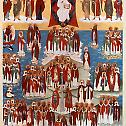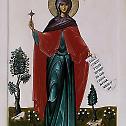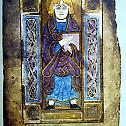Theology
Sermon on Great and Holy Friday
14. April 2017 - 22:29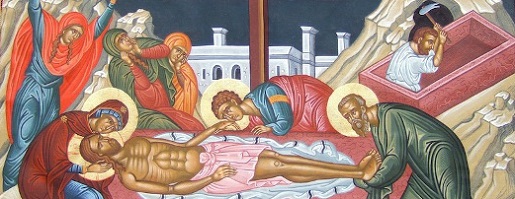 What would you now, brethren, from the ministers of the word? The Word Himself is no more!
What would you now, brethren, from the ministers of the word? The Word Himself is no more!
The Word, co-eternal with the Father and the Spirit, born for our salvation, the Author of every quick and powerful (Heb. 4:12) word, is silent, dead, buried, and sealed up. The more plainly and convincingly “to show man the path of life” (Ps. 16:11) this very Word came down from heaven and put on flesh; but men would not hearken unto the Word, they tear His flesh, and lo, “He is cut off out of the land of the living” (Is. 53:8). Who then shall now give unto us the word of life and salvation?
Holy Week: An Explanation
11. April 2017 - 13:43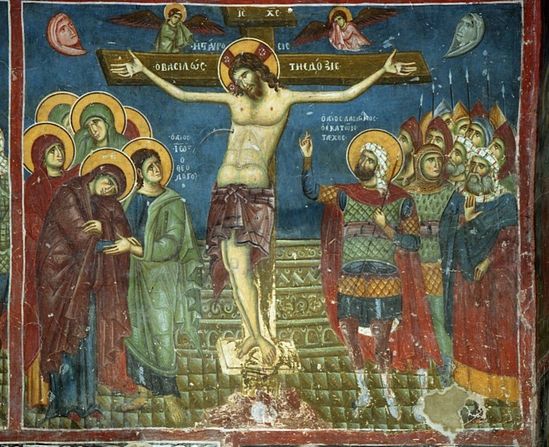 Great Lent and Holy Week are two separate fasts, and two separate celebrations. Great Lent ends on Friday of the fifth week (the day before Lazarus Saturday). Holy Week begins immediately thereafter. Let's explore the meaning of each of the solemn days of Passion Week.
Great Lent and Holy Week are two separate fasts, and two separate celebrations. Great Lent ends on Friday of the fifth week (the day before Lazarus Saturday). Holy Week begins immediately thereafter. Let's explore the meaning of each of the solemn days of Passion Week.
Lazarus Saturday: Lazarus Saturday is the day which begins Holy Week. It commemorates the raising of our Lord's friend Lazarus, who had been in the tomb four days. This act confirmed the universal resurrection from the dead that all of us will experience at our Lord's Second Coming. This miracle led many to faith, but it also led to the chief priest's and Pharisees' decision to kill Jesus (John 11:47-57).
Entry of Our Lord into Jerusalem (Palm Sunday)
8. April 2017 - 21:40 Palm Sunday is the celebration of the triumphant entrance of Christ into the royal city of Jerusalem.
Palm Sunday is the celebration of the triumphant entrance of Christ into the royal city of Jerusalem.
He rode on a colt for which He Himself had sent, and He permitted the people to hail Him publicly as a king. A large crowd met Him in a manner befitting royalty, waving palm branches and placing their garments in His path. They greeted Him with these words: “Hosanna! Blessed is he who comes in the name of the Lord, even the King of Israel! (John 12:13).
The Annunciation of our Most Holy Lady, the Theotokos and Ever-Virgin Mary
7. April 2017 - 16:14 The Feast of the Annunciation is one of the earliest Christian feasts, and was already being celebrated in the fourth century.
The Feast of the Annunciation is one of the earliest Christian feasts, and was already being celebrated in the fourth century.
There is a painting of the Annunciation in the catacomb of Priscilla in Rome dating from the second century. The Council of Toledo in 656 mentions the Feast, and the Council in Trullo in 692 says that the Annunciation was celebrated during Great Lent.
Venerable Alexis the Man of God
30. March 2017 - 12:30 Saint Alexis was born at Rome into the family of the pious and poverty-loving Euphemianus and Aglais.
Saint Alexis was born at Rome into the family of the pious and poverty-loving Euphemianus and Aglais.
The couple was childless for a long time and constantly prayed the Lord to grant them a child. And the Lord consoled the couple with the birth of their son Alexis. At six years of age the child began to read and successfully studied the mundane sciences, but it was with particular diligence that he read Holy Scripture. When he was a young man, he began to imitate his parents: he fasted strictly, distributed alms and beneath his fine clothing he secretly wore a hair shirt. Early on there burned within him the desire to leave the world and serve God. His parents, however, had arranged for Alexis to marry a beautiful and virtuous bride.
A Brief History of the Irish Orthodox Church
30. March 2017 - 12:26On this (Julian Calender) St. Patrick’s day, historical for its first official ecclesiastical commemoration by churches of the Moscow Patriachate, with the poetic “ode to Celtic saints” by Monk Nicodemos.
1. How Did Orthodoxy Reach Ireland?
How did Orthodox Christianity come to this small green island off the shores of the European continent in the uttermost West? Unknown to many, Christianity in Ireland does have an Apostolic foundation, through the Apostles James and John, although the Apostles themselves never actually visited there.

